Banksy's graffiti before it was removed from the Packard plant – Click above for high-res image gallery
It's just a little graffiti, and yet its existence has caused a firestorm of legal wrangling as to who actually owns the work and the building that once housed it. Seems rather odd, until you take a closer look at who is responsible, where it was created and why it exists in the first place.
The Location
Of all the derelict buildings filling the city of Detroit, one of the most famous is the former Packard automobile plant. As much as the city of Detroit would like to do something about the the 3,500,000-square-foot facility, nobody seems quite sure who owns the dilapidated building... nor is there any consensus on who should foot the bill for the massive clean-up project.
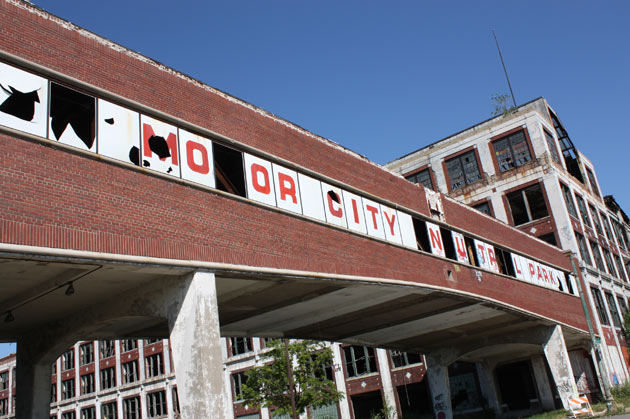
Recently, though, the old Packard plant became just a little bit more valuable, leading to a skirmish between an assortment of interested parties. The how and why that led to the recently revived interest is a story unto itself.
But first, some history. When the Packard automobile plant was first constructed over 35 acres on East Grand Boulevard in Detroit, it was the city's first industrial building made from reinforced concrete. When the plant opened its doors way back in 1903, it was widely considered to be the most advanced automobile manufacturing facility in the world. By the 1930s, the site had reached its zenith of 74 buildings spread across 80 acres in northern Detroit.
Every day, thousands of workers swarmed the plant, building some of the most desirable cars in the world for four decades. During World War II, the facility was converted to assemble engines for the war and was thus extremely important to America's success. Sadly, it would only be a few more years before the plant was shut down in 1956 after being sold to Studebaker, which ceased to exist shortly thereafter.
Over the next 50 years, the once grand Packard automobile plant was left to rot. The City of Detroit attempted to turn the area into a massive industrial park but failed. Today, the site is dangerously unstable and home to huge numbers of scrapped cars, boats and other unwanted detritus.
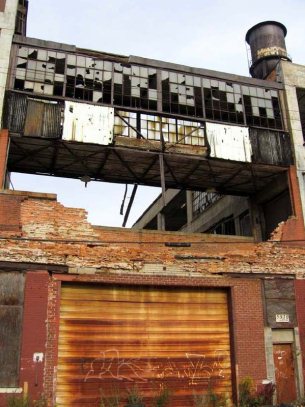
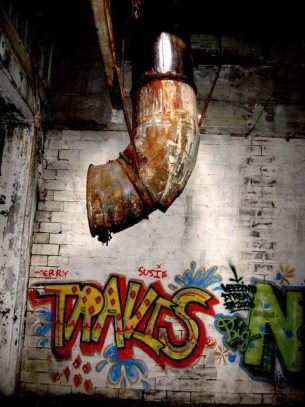
The Artist
Naturally, the abandoned Packard plant is a haven for vandalism. Nearly every surface that can be reached is covered in graffiti, some of it rather interesting. And valuable. British-born and highly-secretive street artist Banksy recently descended on the decrepit Packard plant, leaving his mark behind in the form of an image of a young boy holding a can of red paint. Beside the boy are the words "I remember when all this was trees."
It's a simple message, but it's also a somewhat profound statement when viewed from the ravaged surroundings in which it exists. Or rather, in which it once existed. Shortly after the art appeared, it was literally cut out of the building and transferred to a new site by a group known as the 555 Nonprofit Studio and Gallery. However, some parties want it put back from where it came, while others believe they are entitled to damages related to its relocation.
Why? It seems that Banksy's handiwork has a rather high value attached to it. In fact, Angelina Jolie is said to have paid half a million dollars for a few pieces of the UK artist's previous paintings, and this latest piece is said to be valued at over $100,000. But in this instance, there are questions as to who, if anyone, owns Banksy's work.

The Players
Says Luis Croquer, director of the Museum of Contemporary Art Detroit, "This may be unprecedented, because in most other cities, you wouldn't be able to take a wall home... What does it mean to move a wall? And beyond legality, who does the wall really belong to, and now does the art belong to the gallery? To everybody? To nobody? We're operating in this space where there's this lawlessness that opens up possibilities that would be much harder to encounter in other cities."
Not surprisingly, the City of Detroit is keenly interested in how the legal proceedings turn out, as it has been attempting to find the true owner of the site for quite some time. The best anyone can figure, the plant is currently owned by a company called Biosource, Inc, and the only person on that company's books is Dominic Cristini. Cristini is currently serving a prison term in California on drug charges, leaving the local government to try to decide how best to go about cleaning up the site.
Of course, now that there's some value to the property and a lawsuit, other potential players have worked their way into the picture. Interestingly, the name on the legal documents is Romel Casab, not Cristini. And Detroit now has another person to question regarding the site and its potential cleanup.
As it currently stands, 555 has placed the graffiti in a protective enclosure and has it safely displayed at its gallery on West Vernor Highway in the shadow of I-75.
The Remaining Questions
Was 555 right to take Banksy's artwork? That depends on whom you ask and your point of view. Some say that the graffiti should have been left where it was created, since that's where the artist was inspired to create it in the first place and since that's where its message may be the most powerful.
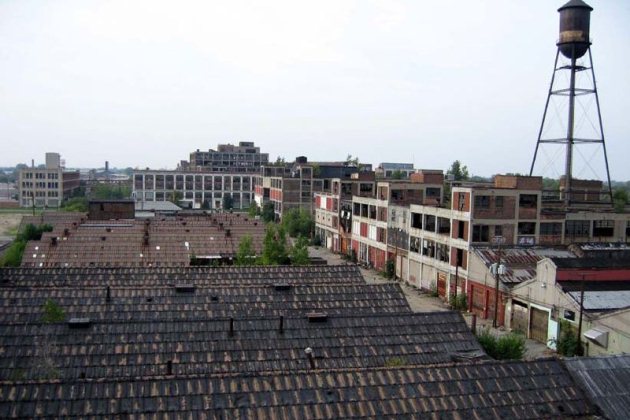
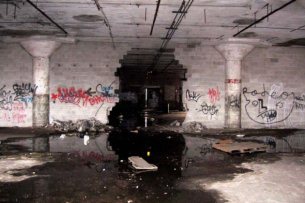
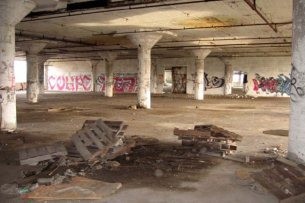
Others, such as volunteer executive director and co-founder of 555 Carl W. Goines, believe it must be preserved at all costs. "It's about preservation for us, said Goines. "We're watching this beautiful city crumble around us and we can't do anything to stop it. So with this fine-art piece – and it's not just everyday graffiti that you might whiz by – here was our opportunity to do something. It would have been destroyed if we didn't make the effort."
Regardless of whose version of the facts you choose to believe, there's obviously value to the artwork, and that stands in stark contrast to the surroundings that inspired its creation. It seems odd that a lone bit of graffiti was the shot that started a war amongst a cast of characters that includes the long dormant and silent owners of a rundown building and a seemingly well-intentioned crew of fervent art collectors, and perhaps that is what makes Banksy's works so intriguing.
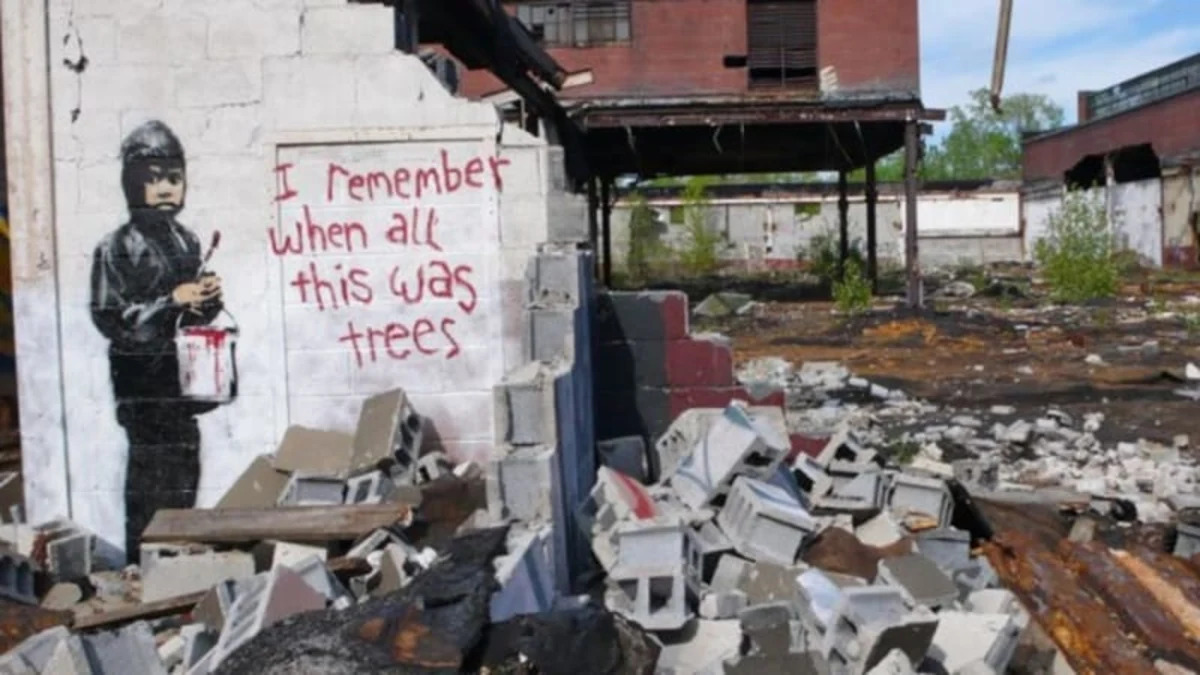

Sign in to post
Please sign in to leave a comment.
Continue